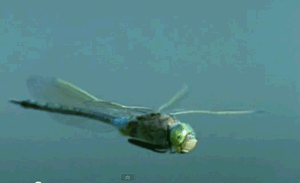|
†††††††††† ††††††††† Cold Blooded with an Exoskeleton
All
insects are cold blooded creatures. That is, they rely
on the temperature of their environment to increase their body heat.
During cold days they remain motionless because they have very little
energy to search for food. During warm days, insects will absorb the
heat from their surroundings and increase their body temperature high
enough to search for food.
Creatures
such as mammals are known as warm blooded. Their body temperature
is kept constant irrespective of the environment's temperature. It might
surprise you to know that even during the coldest days your body temperature
remains constant at around 37oC.† Creatures exposed to low temperature for
great lengths of time will die. Unless of course they hibernate like
bears do during the winter months. This way the body, in effect, shuts
down. Chemical reactions that take place in their body require heat
in order to proceed. If heat is not present these reactions can not
produce the energy that is vital for to sustain life.
|
||
| Insects have a thick inflexible
skin known as an exoskeleton. This exoskeleton
must be shed several times in an insectís life as it grows in size.
The skin is high in protein and some insects, such as caterpillars, will eat the skin they
have shed. The exoskeleton provides the insects with protection and
support. The shedding of the tough outer skin is not a simple task. The image on the right shows a cicada during its last moulting. The adult emerges with wings and must spend time drying and stretching them. Cicada nymphs, are subterranean dwellers, suck sap from the roots of various species of tree. Nymphs can remain underground for up to 17 years. |
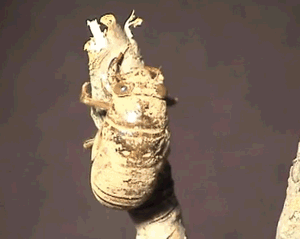 |
|
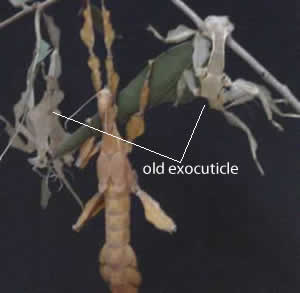 |
The exoskeleton has several functions 1) Provides structure The stick insect will outgrow its skin several times throughout its life. It will have to shed this inflexible exoskeleton and grow a new and bigger one. The discarded exoskeleton is a rich source of protein and it is not unusual for insects to eat the skin. Not only does the exoskeleton serve as a protective cover but it also allows for muscle attachment and movement. |
|
Flight would be impossible if muscle had no where to attach themselves. The exoskelton provides points of attachment for muscles which makes flight possible.
|
|
|
| All insects that have a tough exoskeleton also have a segmented body. The exoskeleton is a hard armour that protects the insect from dehydration and predators. Why is it important for the armour to have many joints or segments along its length. Refer to the picture on the right. | 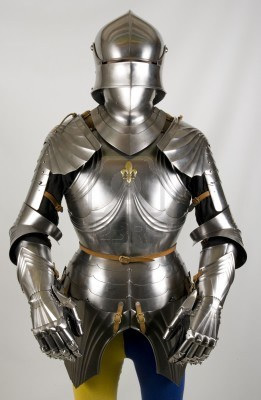 |
|
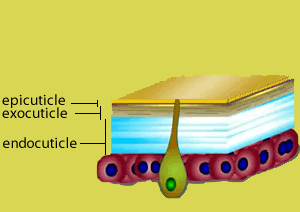 |
How does an insect remove its inflexible suit of armor only to replace it with a bigger one? During molting the cuticle degrades and then reforms. First the hormone ecdysone stimulates epidermal cells to multiply and grow in size. This is the period where the skin of the insect under the exoskelleton grows before the new exoskeleton is formed. The existing cuticle detaches from the epidermal cells. This is called apolysis. The space between the cuticle and the epidermal cells is filled with a gel that contains inactive enzymes, such as chitinase and proteases, that can digest the cuticle. Next, the enzymes in the gel are activated and start to digest the cuticle from within. Most of the products of digestion are used by the epidermal cells to make a new cuticle. The digestion continues up to the exocuticle. Before the old exocuticle is discarded a new one is laid down. New endocuticle is deposited. |
|
1) Which one is not a function of th eexoskeleton 2) The exoskeleton is very flexible 3) The exoskeleton can grow in size to accomodate the growing insect. 4) Special enzymes in the molting gel help break down proteins that form the endocuticle. 5 ) Epidermal cells are the cells that make up the exocuticle. 6) The broken down proteins of the endocuticle are msotly recycled and used by the epidermal cells to from a new exocuticle. 7) The part of the exoskelton that is shed by the insect is known as the 8) The skin under the exoskeleton grows just before the exoskeleton is shed. This happens when
|
||
Home of stick insects
